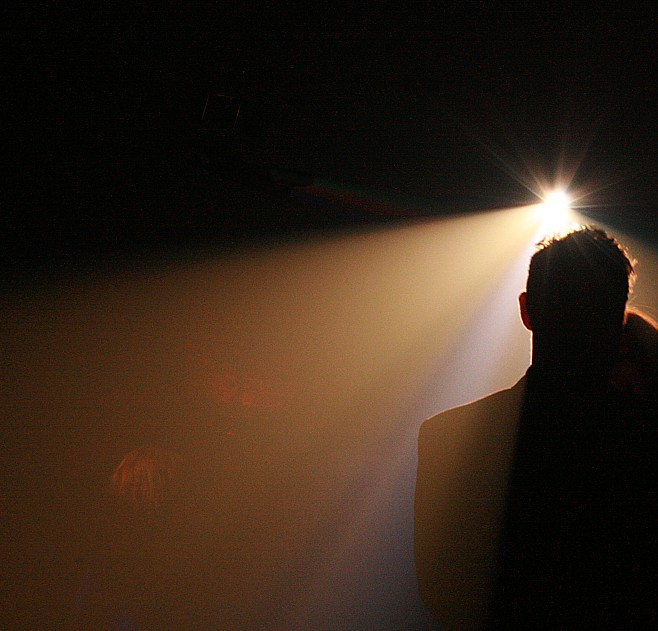I had agreed to say a “couple of words” about the topic at hand. I was directed into an auditorium where a camera projected my every movement onto a giant screen. A spotlight shone on my frizzled hair and sweat-spotted shirt, and a microphone was thrust into my hand. The other hand, holding the paper with the outline of what I wanted to say, began to tremble…
Has this ever happened to you? Has an apparently small meeting ever turned into something much bigger, attracting the attention of five times the number of people you expected? Fortunately I had been reading Performing Under Pressure by Hendrie Weisinger and J. P. Pawliw-Fry a couple days before my “star turn” in the spotlight. Thus I knew my best chance to cope with the unwelcome pressure of the moment was to remember—and apply—one or more of the pressure solutions that the authors describe.
something much bigger, attracting the attention of five times the number of people you expected? Fortunately I had been reading Performing Under Pressure by Hendrie Weisinger and J. P. Pawliw-Fry a couple days before my “star turn” in the spotlight. Thus I knew my best chance to cope with the unwelcome pressure of the moment was to remember—and apply—one or more of the pressure solutions that the authors describe.
Quick, um, what were those solutions?
Unfortunately, in times of stress, high pressure tasks feel as heavy as the burden of Sisyphus (whose picture is on the cover of the book). The working memory shrinks. As does the ability to problem solve. Both these points are explained well in the book, with the biochemistry briefly described to bring home the point.
“Pressure undermines performance,” the authors Weisinger and Paliw-Fry point out. “Nobody performs better under pressure,” they write more than once. Despite wishful mythology to the contrary, no one does better under pressure than they do in practice.
One of their key points is that you should practice under stressful conditions to become better than satisfactory. Fine… although I was stuck under the spotlight without having the practice time.
But there I was, still under the spotlight, dredging my few responsive brain cells for some memory of how to cope. Here’s what I pulled out.
- I told myself I was not the main speaker; I was just a commentator. I told myself that no one of any potential importance to my career was in the audience.
- I stared at the paper with the comments I had scratched on it and thought: “no one has made these points—I must mention these things which need mentioning…”
- I squinted out at the farthest guy in the room, in a chair very near to where I had been sitting. As luck would have it, his mouth was open. I don’t quite understand how I did it, but I convinced myself that his mouth was open in awe. Yes, he was in awe at how I, an unremarkable character, had floated into the spotlight.
In fact, Weisinger and Paliw-Fry list 22 “pressure solutions” that would make anyone’s moment in the spotlight easier. They explain them clearly and succinctly. The ones I had fastened on to in my hour of need were: “downsize the importance,” focus on the mission,” and “affirm your self-worth.”
These three things did the trick. I spoke reasonably coherently, and received positive feedback afterward. I will turn to this book the next time I am about to be handed another high-pressure task. ª


